Yellow-billed Pintail
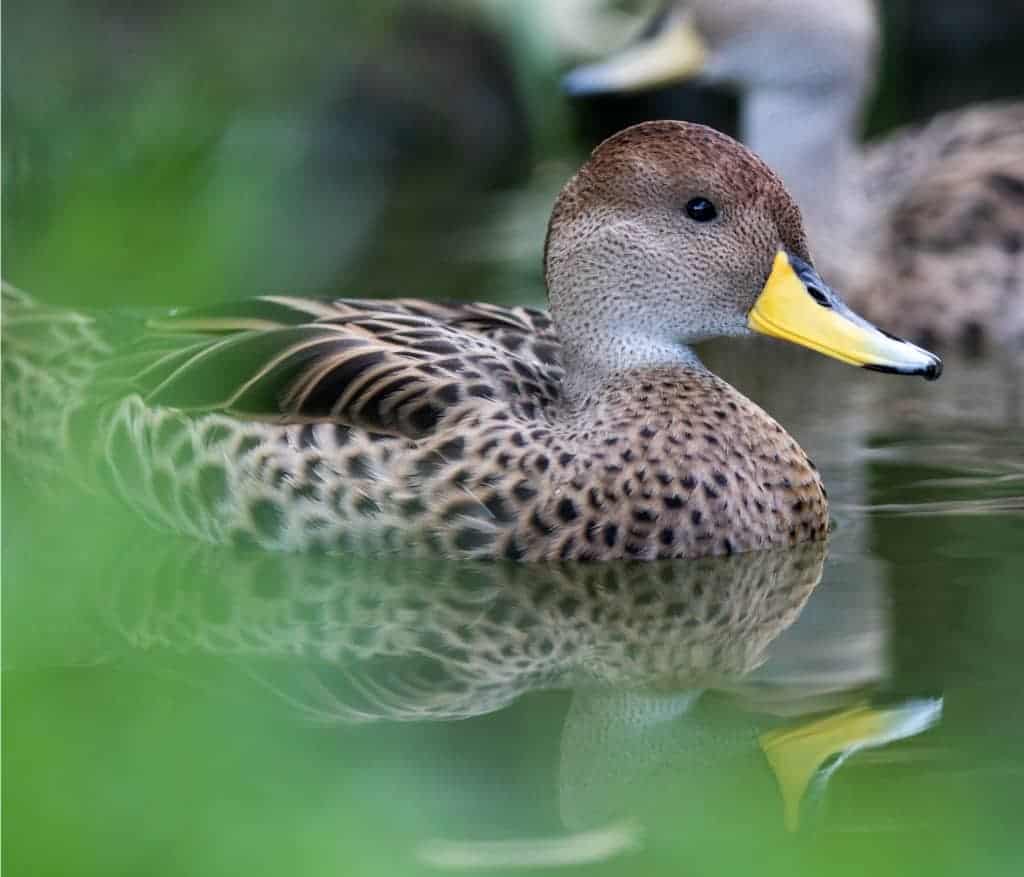
There are two extant subspecies of Yellow-billed Pintail recognised:
- Chilean Anas georgica spinicauda
- South Georgian A. g. georgica
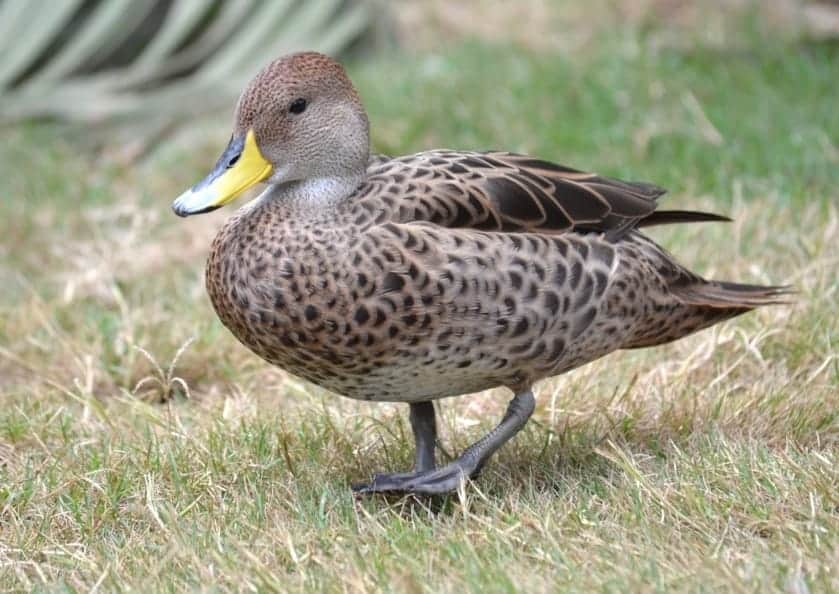
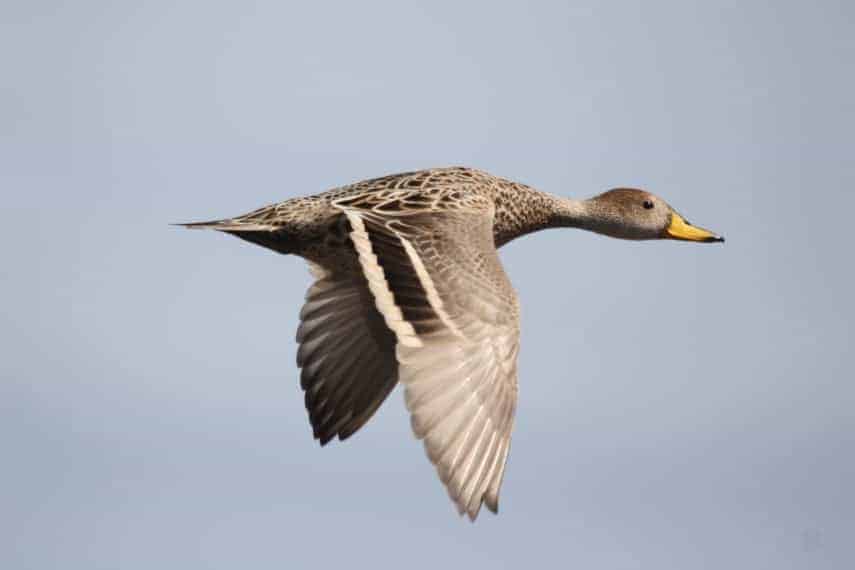
Anas georgica
With the typical shape of a dabbling duck, the Yellow-billed Pintail is mostly pale warm brown with a bright yellow bill. It is relatively slim with a long elegant neck.
Native to Argentina, Bolivia, Brazil, Chile, Colombia, Ecuador, Peru and Uruguay, they are also found on some of the sub Antarctic islands, including the Falkland Islands and South Georgia. The South Georgian subspecies is sedentary — it does not migrate. This, the nominate race, is slightly darker, smaller and more compact than the Chilean one.
The Yellow-billed Pintail has a dark, velvet-black speculum, unlike the similar-looking but smaller Yellow-billed Teal Anas flavirostris, whose speculum is brilliant green and is overall a slightly greyer bird.
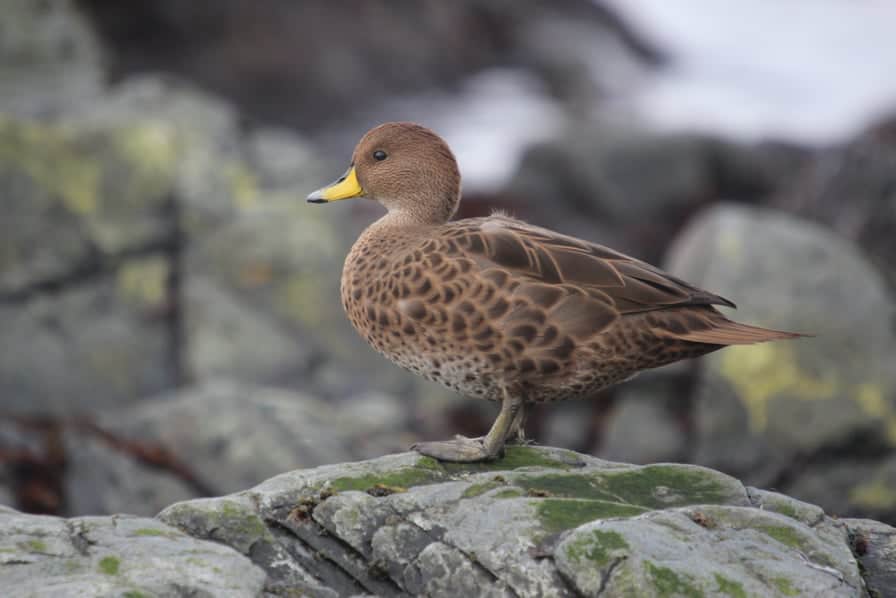
Like many ducks, Yellow-billed Pintail are omnivorous, constantly foraging for nutritious fare. Those on South Georgia are regularly seen feeding on Antarctic fur seal carcases, once these are opened by larger scavengers.
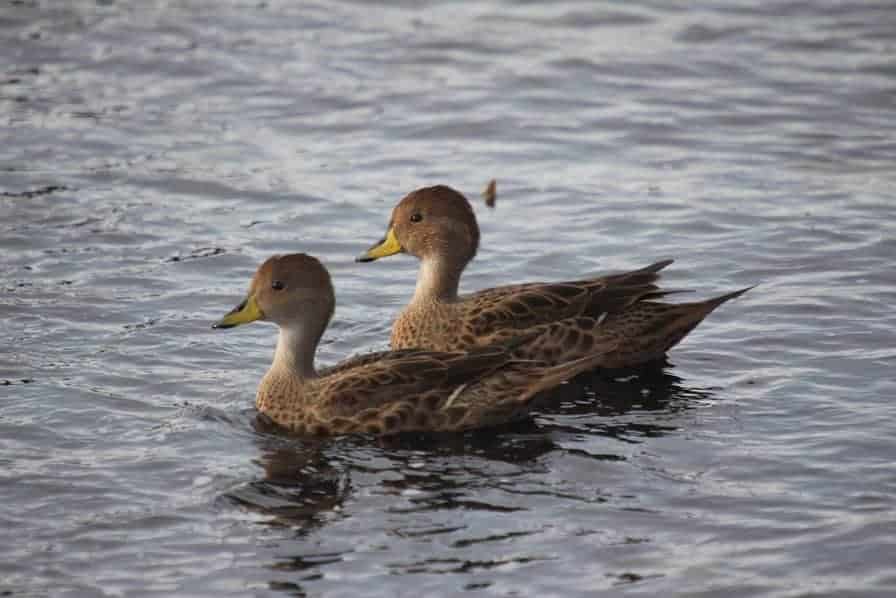
The South Georgia Pintail’s survival was threatened by invasive rats, unwittingly brought to the island by sailors and whalers over the years since Cook’s 1775 expedition.
By 2018, the South Georgia Heritage Trust completed an ambitious project to rid the island of rats.
Usually nesting close to water in a shallow platform of stems and grass, the Yellow-billed Pintail can lay up to a dozen eggs. The female incubates for 24 to 28 days herself, but the male stands guard nearby. If a clutch fails, they will lay again. In the wild, Yellow-billed Pintail may have 2 or 3 clutches.
FURTHER READING
Graham, A. M. et al. (2021) Heredity. High-altitude adaptive introgression of beta-globin in two Andean waterfowl.
Share this page